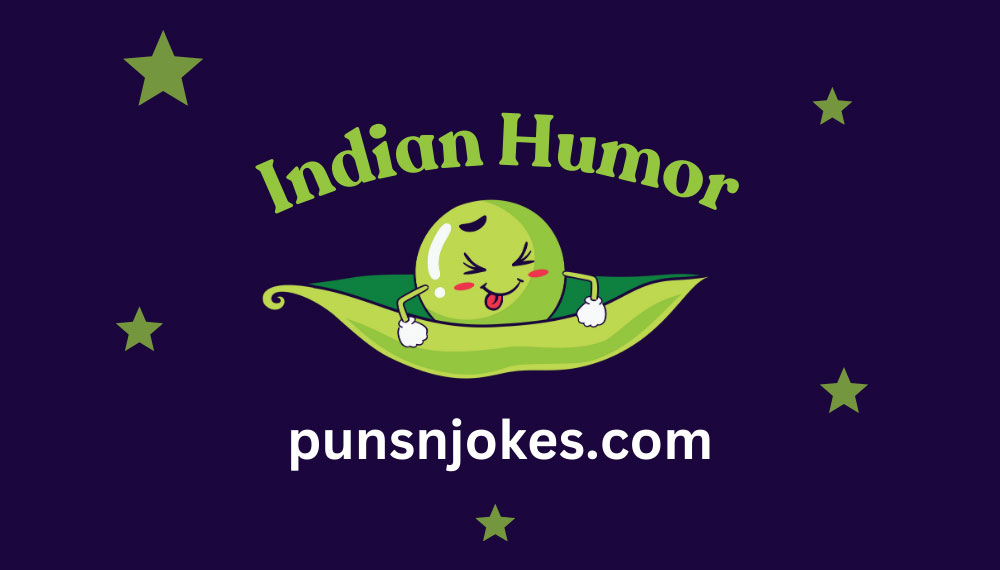
Growing up in India, I’ve always been captivated by the unique charm of Indian humor. It’s a delightful fusion of quick wit and deep-rooted traditions that never fails to bring a smile to people’s faces. From timeless jokes passed down through generations to modern satirical takes on societal norms, Indian humor is as diverse as the country itself. In this article, I’ll explore the rich tapestry of Indian comedy, shedding light on why it continues to resonate with audiences worldwide.
Whether it’s the playful banter between friends, the comedic timing of Bollywood films, or the clever wordplay in regional stand-up acts, Indian humor showcases a blend of intelligence and cultural insight. Through clever observations and relatable anecdotes, comedians in India have mastered the art of making people laugh while offering subtle commentary on the world around them. Join me on a journey through the colorful world of Indian humor, where laughter is not just a sound but a celebration of life’s eccentricities.
Historical Context of Indian Humor
Delving into the historical backdrop of Indian humor, I uncover a tapestry woven with cultural nuances and societal reflections. Indian humor finds its roots in ancient texts like the “Panchatantra” and “Hitopadesha,” where fables and parables were laced with wit to impart valuable lessons.
During the colonial era, Indian satirists used humor as a tool to subtly critique the British Raj, offering a form of resistance through laughter. Figures like Birbal and Tenali Rama became legendary for their quick wit and clever repartee, creating a legacy that continues to influence modern comedy.
The advent of Indian cinema ushered in a new era of humor, with iconic comedians like Johnny Lever and Paresh Rawal captivating audiences with their impeccable timing and comedic genius. Bollywood’s ability to blend humor with emotion has made it a cornerstone of Indian entertainment, reflecting the diverse fabric of the country’s comedic landscape.
In contemporary times, the rise of stand-up comedy has revolutionized Indian humor, providing a platform for comedians to voice unfiltered opinions and challenge societal norms. Artists like Zakir Khan and Vir Das have redefined comedy by infusing personal anecdotes with social commentary, resonating with audiences across generations.
Through the ages, Indian humor has evolved from traditional folk tales to cutting-edge satire, embodying a spectrum of wit that mirrors the complexities of Indian society. By embracing humor as a tool for introspection and unity, India’s comedic legacy continues to evolve, blending tradition with modernity in a rich tapestry of laughter.
Contemporary Indian Stand-up Comedians
Exploring the vibrant realm of contemporary Indian stand-up comedians offers a glimpse into the diverse talent that shapes the modern comedy scene in India. Let’s delve into the humorous world of some notable stand-up comedians making waves in the industry.
Amit Tandon
Shraddha Jain (AiyyoShraddha)
Kapil Sharma
Kanan Gill
Rahul Subramanian
Kenny Sebastian
Vipul Goyal
Gaurav Gupta
Gaurav Kapoor
Sai Kiran
Angad Ranyal
Ravi Gupta
Pratyush Chaubey
Rupali Tyagi
Azeem Banatwalla
Anecdotal Humor in Indian Art and Culture
In exploring the richness of Indian humor, I delve into the realm of anecdotal humor prevalent in Indian art and culture. Anecdotal humor in India often revolves around everyday situations, cultural quirks, and social norms, offering a unique perspective on life through comedic storytelling.
- Folk Tales and Mythology: Indian folklore and mythology are replete with anecdotes that blend humor with moral lessons. Characters like Tenali Rama and Birbal are renowned for their wit and clever anecdotes that entertain and educate simultaneously. These tales have been passed down through generations, illustrating the enduring appeal of anecdotal humor in Indian storytelling traditions.
- Cinematic Influences: Indian cinema has also played a significant role in popularizing anecdotal humor. Comedy films featuring iconic actors like Johnny Lever and Paresh Rawal showcase the comedic timing and storytelling prowess that characterize Indian cinematic humor. Their anecdotes resonate with audiences, providing a lighthearted escape while offering subtle commentary on societal norms and values.
- Stand-Up Comedy: In recent years, Indian stand-up comedians have revitalized anecdotal humor, infusing it with contemporary themes and personal narratives. Artists like Zakir Khan and Vir Das are adept at weaving anecdotal humor into their routines, sharing relatable stories that resonate with diverse audiences. By incorporating personal experiences and cultural references, these comedians bring a fresh perspective to anecdotal humor, transforming traditional storytelling into a modern art form.
- Social Commentary: Anecdotal humor in Indian art and culture often serves as a vehicle for social commentary, allowing comedians to address sensitive topics with wit and satire. Through humorous anecdotes, comedians like Amit Tandon, Kapil Sharma, Kanan Gill, and Kenny Sebastian navigate complex societal issues, challenging norms and sparking conversations while eliciting laughter. This blend of humor and insight reflects the profound impact of anecdotal storytelling on Indian comedy, highlighting its relevance in contemporary society.
Influence of Tradition on Indian Humor
Exploring the roots of Indian humor unveils a deep-seated connection with tradition. Traditional Indian humor draws heavily from cultural heritage, folklore, and mythological narratives, shaping its distinct comedic style. In Indian society, humor has long served as a means of storytelling, education, and social commentary, intertwining entertainment with moral lessons. From ancient texts like the “Panchatantra” to the witty escapades of legendary jesters like Tenali Rama and Birbal, humor has been a pervasive element in Indian traditions.
Anecdotal humor, a hallmark of Indian comedy traditions, finds its origins in everyday situations, folklore, and mythology. Through comedic storytelling, characters like Tenali Rama and Birbal imparted wisdom, challenged societal norms, and entertained audiences with their quick wit and clever repartee. This traditional form of humor not only entertained the masses but also carried underlying messages that resonated with the ethos of the times.
In contemporary settings, the influence of traditional humor on Indian comedy remains palpable. Modern stand-up comedians, such as Zakir Khan and Vir Das, continue to draw inspiration from anecdotal humor, infusing it with a modern twist. By incorporating personal anecdotes and social commentary into their acts, these comedians bridge the gap between the past and present, fostering a comedic narrative that reflects the cultural richness and diversity of India.
The evolution of Indian humor from traditional folk tales to modern satire underscores its adaptability and relevance in a changing society. With comedians like Amit Tandon, Kapil Sharma, Kanan Gill, and Kenny Sebastian using humor as a tool for addressing pressing societal issues, Indian comedy serves as a mirror that reflects the complexities of contemporary life. Through a blend of wit, satire, and storytelling, Indian comedians continue to push boundaries, spark conversations, and unite audiences through the universal language of laughter.
Humor and Religion in India
Religion plays a significant role in shaping the humor landscape in India. Hinduism, with its vast array of deities and stories, provides a rich tapestry for comedic inspiration. Characters like Lord Krishna, known for his mischievous antics as a child, are often portrayed in humorous situations in folk tales and modern adaptations. These depictions not only entertain but also serve to humanize the divine, making the stories more relatable to the common person.
Moreover, religious festivals and rituals offer ample material for comedic reinterpretation. Satirical plays and performances during festivals like Holi and Diwali often poke fun at societal norms and the idiosyncrasies of human behavior. By blending humor with religious themes, these performances provide a unique form of social commentary while entertaining the masses.
In addition, India’s diverse religious landscape ensures that humor is not limited to a single faith. Islam, Sikhism, Christianity, and other religions practiced in the country each bring their own comedic traditions and stories to the cultural tapestry. Comedians and storytellers draw from these varied religious backgrounds to create a melting pot of humor that resonates with audiences across different faiths.
Overall, the intertwining of humor and religion in India showcases not only the country’s cultural richness but also its ability to find light-heartedness and laughter in the most sacred of traditions. The comedic adaptations of religious stories and rituals serve as a testament to India’s inclusivity and the universal nature of humor in bridging diverse communities.
Impact of Indian Humor on Society
Exploring the profound impact of Indian humor on society, I delve into how humor serves as a powerful tool for social commentary, cultural reflection, and unity within diverse communities.
- Social Commentary Through Satire:
- Indian humor, steeped in satire, offers a humorous lens through which societal issues are critiqued and challenged.
- Comedians like Vir Das and Zakir Khan use their platforms to address social taboos, inequalities, and political controversies, sparking conversations and promoting critical thinking.
- Cultural Reflection and Identity:
- Traditional Indian humor serves as a mirror reflecting the essence of Indian culture, heritage, and values.
- Characters like Tenali Rama and Birbal embody wit and wisdom, showcasing how humor can educate, entertain, and preserve cultural traditions.
- Unity Through Laughter:
- Humor acts as a unifying force in India, transcending linguistic, regional, and religious barriers.
- By finding common ground through laughter, comedians weave a tapestry of inclusivity, celebrating the diversity that defines India’s social fabric.
In essence, Indian humor not only entertains but also enlightens, challenges, and unites, making it an integral part of societal discourse and cultural cohesion.
Regional Diversity in Indian Humor
Exploring the regional diversity in Indian humor allows me to appreciate the rich tapestry of comedic styles that permeate the country. From the slapstick comedy of Bollywood films to the subtle wit of South Indian stand-up acts, the regional nuances add depth and flavor to Indian humor.
- Northern Humor: Delhi’s tongue-in-cheek sarcasm and wordplay, coupled with Punjab’s boisterous and earthy humor, create a unique blend of comedic expressions in the North. The witty repartee of North Indian comedians like Kapil Sharma resonates with audiences across the country, showcasing the region’s penchant for clever wordplay and observational humor.
- Southern Humor: Down south, the comedy scene is characterized by a blend of satire and social commentary. Tamil Nadu’s political satire, Kerala’s slapstick comedy, and Karnataka’s wit infused with storytelling elements offer a diverse palette of humor. Comedy shows like “Comedy Khiladigalu” in Kannada television highlight the region’s emphasis on storytelling and situational humor.
- Eastern Humor: The East boasts a mix of cultural and slapstick comedy, with West Bengal’s rich tradition of satire and wit reflected in the works of iconic figures like Satyajit Ray. Odisha’s blend of humor with folklore and mythology creates a unique comedic landscape that pays homage to the region’s cultural heritage.
- Western Humor: The vibrant cultures of Maharashtra and Gujarat bring forth a fusion of observational humor, wit, and satire. Mumbai’s fast-paced life and diverse population inspire a brand of comedy that reflects the city’s unique ethos, while Gujarat’s love for satire and wordplay shines through in the performances of comedians like Jignesh Mevani.
Embracing the regional diversity in Indian humor allows for a deep dive into the varied comedic traditions that shape the country’s cultural landscape. Each region adds its own distinct flavor to the comedy scene, showcasing the multifaceted nature of humor in India.
Conclusion
Indian humor is a vibrant tapestry woven with wit and tradition. From its historical roots critiquing colonial rule to the modern-day stand-up comedy scene, India’s comedic landscape is diverse and rich. The regional variations in humor styles add depth and complexity to the country’s comedic traditions. Each part of India contributes its unique flavor, from sarcasm in Delhi to boisterous humor in Punjab, and from cultural comedy in the East to observational humor in the West. Embracing this diversity is key to understanding the multifaceted nature of Indian humor. As a cultural phenomenon, Indian humor continues to evolve, reflecting the changing times while staying true to its traditional roots. It is this blend of old and new, tradition and innovation, that makes Indian humor a dynamic and integral part of the country’s cultural fabric.
